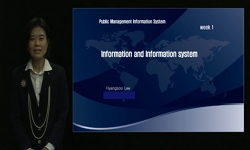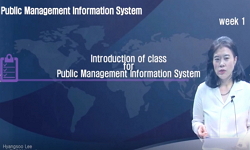The government is making efforts to transition to e-government as well as improvement of public service through National Informatization Programs. In addition, as with other public programs, the enterprise architecture is actively introduced at the go...
http://chineseinput.net/에서 pinyin(병음)방식으로 중국어를 변환할 수 있습니다.
변환된 중국어를 복사하여 사용하시면 됩니다.
- 中文 을 입력하시려면 zhongwen을 입력하시고 space를누르시면됩니다.
- 北京 을 입력하시려면 beijing을 입력하시고 space를 누르시면 됩니다.

전자정부를 위한 전략적 정렬모형의 확장에 대한 탐색적 연구 = An Exploration of Extended Strategic Alignment Model for eGovernemt
한글로보기부가정보
다국어 초록 (Multilingual Abstract)
The government is making efforts to transition to e-government as well as improvement of public service through National Informatization Programs. In addition, as with other public programs, the enterprise architecture is actively introduced at the government-wide to solve the problem of overlapping public investment. Nevertheless, in order for national informatization efforts to achieve effective performance, it is necessary to harmonize with the national vision, the national strategies and tasks prepared by the government to implement them concretely. Therefore, effective management of the national informatization programs should be based on the linkage or alignment of the national strategy and tasks, and the Basic Plan for National Informatization should be adapted accordingly. This paper intends to reconsider this in terms of IT strategic alignment. To this end, I will expand the strategic alignment theory from the diversified and complex corporate organization to examine the perspective of strategic alignment on the functional, structural, and temporal scales and draw implications for current e-government.
국문 초록 (Abstract)
정부는 국가정보화사업을 통해 공공서비스의 품질 향상을 넘어서 전자정부로의 전환을 위해 노력을 경주하고 있다. 더불어 여타 공공사업과 마찬가지로 중복투자의 문제를 해소하기 위해 ...
정부는 국가정보화사업을 통해 공공서비스의 품질 향상을 넘어서 전자정부로의 전환을 위해 노력을 경주하고 있다. 더불어 여타 공공사업과 마찬가지로 중복투자의 문제를 해소하기 위해 전사적 아키텍처를 범정부 차원에서 적극적으로 도입하고 있다. 그럼에도 국가정보화노력이 성과로 이어지기 위해서는 행정부가 마련한 국가비전과, 이를 구체적으로 구현하기 위한 국정전략과 국정과제들과 조화를 이루어야 한다. 따라서 국가정보화사업의 효과적인 관리란 국정전략과 국정과제와의 연계 혹은 정렬을 기초로 이루어져야 하며, 국가정보화기본계획도 이에 맞추어져야 한다. 본 논문은 이를 IT전략적 정렬이라는 차원에서 재고찰하고자 한다. 이를 위해 전통적인 전략적 정렬모형을 바탕으로 다각화된 복잡화된 기업조직에 대한 전략적 정렬이론을 검토한다. 이는 단일 비즈니스조직을 기능적, 구조적, 시간적 차원에서 확장하여 전략적 정렬의 관점을 고찰해 본다. 이와 같은 기업조직에 대한 확장을 위한 논리적 전개를 바탕으로 공공부분의 특성을 고려한 전자정부를 위한 시사점을 도출한다.
1 성태경, "조직의 전략과 정보기술의 활용을 통한조직의 성과 향상에 관한 연구" 26 (26): 173-194, 1997
2 임태수, "정보화 성과관리 개선방향에 관한 연구" 한국엔터프라이즈아키텍처학회 13 (13): 421-430, 2016
3 김형진, "정보기술아키텍처 도입기관의 IT Governance 유형에 관한 연구" 한국정보화진흥원 16 (16): 22-40, 2009
4 김진환, "전략적 성과측정시스템과 종업원 성과 간의 경로모형 분석: 리더 및 조직문화의 변화에 의한 전략적 정렬의 달성" 한국회계학회 23 (23): 415-457, 2014
5 홍필기, "전략과 실행의 정렬도구로서의 범정부EA 개선 연구" 한국엔터프라이즈아키텍처학회 13 (13): 1-10, 2016
6 박범조, "실물옵션을 이용한 IT 투자가치 평가: 개별위험의 동적 변화를 고려한 모형의 적용" 한국재무학회 18 (18): 1-30, 2005
7 전대성, "성공적인 지능정보행정 도입을 위한 정부부문의 역할에 관한 연구" 2415-2422, 2017
8 홍필기, "국가정보화시행계획 업무의 EA적 접근" 한국엔터프라이즈아키텍처학회 11 (11): 235-247, 2014
9 이재근, "국가정보화사업의 전주기적 관리를 위한 미션구성체 설계에 관한 탐색적 연구" 정부학연구소 21 (21): 299-332, 2015
10 정충식, "국가정보화 추진체계에 대한 비판적 검토: 추진체계의 변화과정을 중심으로" 한국지역정보화학회 12 (12): 39-66, 2009
1 성태경, "조직의 전략과 정보기술의 활용을 통한조직의 성과 향상에 관한 연구" 26 (26): 173-194, 1997
2 임태수, "정보화 성과관리 개선방향에 관한 연구" 한국엔터프라이즈아키텍처학회 13 (13): 421-430, 2016
3 김형진, "정보기술아키텍처 도입기관의 IT Governance 유형에 관한 연구" 한국정보화진흥원 16 (16): 22-40, 2009
4 김진환, "전략적 성과측정시스템과 종업원 성과 간의 경로모형 분석: 리더 및 조직문화의 변화에 의한 전략적 정렬의 달성" 한국회계학회 23 (23): 415-457, 2014
5 홍필기, "전략과 실행의 정렬도구로서의 범정부EA 개선 연구" 한국엔터프라이즈아키텍처학회 13 (13): 1-10, 2016
6 박범조, "실물옵션을 이용한 IT 투자가치 평가: 개별위험의 동적 변화를 고려한 모형의 적용" 한국재무학회 18 (18): 1-30, 2005
7 전대성, "성공적인 지능정보행정 도입을 위한 정부부문의 역할에 관한 연구" 2415-2422, 2017
8 홍필기, "국가정보화시행계획 업무의 EA적 접근" 한국엔터프라이즈아키텍처학회 11 (11): 235-247, 2014
9 이재근, "국가정보화사업의 전주기적 관리를 위한 미션구성체 설계에 관한 탐색적 연구" 정부학연구소 21 (21): 299-332, 2015
10 정충식, "국가정보화 추진체계에 대한 비판적 검토: 추진체계의 변화과정을 중심으로" 한국지역정보화학회 12 (12): 39-66, 2009
11 엄석진, "국가정보화 사업 거버넌스 분석을 통한 예산효율화 방안 연구" 국회예산정책처 2018
12 이재근, "국가연구개발사업의 전략적 포트폴리오 관리모형에 대한 탐색적 연구" 정부학연구소 15 (15): 95-117, 2009
13 방민석, "‘정부3.0’에 대한 개념적 탐색과 법정책적 과제" 한국지역정보화학회 16 (16): 123-146, 2013
14 Porter, M. E., "What is Strategy?" 61-78, 1996
15 Hu, Q., "Using the balanced scorecard to achieve sustained IT-business alignment : a case study" 17 (17): 8-, 2006
16 Chung, S. H., "The impact of information technology infrastructure flexibility on strategic alignment and application implementations" 11 (11): 11-, 2003
17 Schilling, M.A., "The Use of Modular Organizational Forms : An industrylevel analysis" 44 (44): 1149-1168, 2001
18 Galliers, R.D., "The Social Study of Information and Communication Technology" Oxford University Press 231-262, 2004
19 Prahalad, C.K., "The New Meaning of Quality in the Information Age" 77 (77): 109-118, 1999
20 Dosi, G., "The Nature and Dynamics of Organizational Capabilities" Oxford University Press 2000
21 Makadok, R., "The Four Theories of Profit and their Joint Effects" 37 (37): 1316-1334, 2011
22 Sabherwal, R., "The Dynamics of Alignment: Insights from a punctuated equilibrium model" 12 (12): 179-197, 2001
23 Venkatraman, N., "The Concept of Fit in Strategy Research: Toward Verbal and Statistical Correspondence" 14 (14): 423-444, 1989
24 Barua, A., "The Calculus of Reengineering" 7 (7): 409-428, 1996
25 Kaplan, R. S., "The Balanced Scorecard: Measures That Drive Performance" 71 (71): 172-180, 1992
26 Kaplan, R. S., "Strategy maps:Converting intangible assets into tangible outcomes" Harvard Business Press 2004
27 Hamel, G., "Strategic Intent" 67 (67): 63-76, 1989
28 Kettinger, W. J., "Strategic Information Systems Revisited : A Study in Sustainability and Performance" 18 (18): 31-58, 1994
29 Henderson, J.C., "Strategic Alignment: Leveraging Information Technology for Transforming Organisations" 32 (32): 4-16, 1993
30 Sirmon, D. G., "Resource Orchestration to Create Competitive Advantage:Breadth, depth, and life cycle effects" 37 (37): 1390-1412, 2011
31 조용구, "RTE 구현 정보시스템과 민첩성 역량 그리고 기업성과의 관계" 엘지씨엔에스 6 (6): 113-127, 2007
32 Teece, D.J., "Profiting from Technological Innovation: Implications for integration, collaboration, licensing and public policy" 15 (15): 285-305, 1986
33 Eisenhardt, K.M., "Politics of Strategic Decision Making in High-Velocity Environments : Towards a midrange theory" 31 (31): 737-770, 1988
34 Tiwana, A., "Platform Evolution: Coevolution of platform architecture, governance, and environmental dynamics" 21 (21): 675-687, 2010
35 Kathuria, R., "Organizational Alignment and Performance: Past, present and future" 45 (45): 503-517, 2007
36 Reich, B.H., "Measuring the Linkage between Business and Information Technology Objectives" 20 (20): 55-81, 1996
37 Cohen, M.D., "Leadership and Ambiguity: The American college president" McGraw-Hill 1974
38 Powell, T.C., "Information Technology as Competitive Advantage: The role of human, business, and technology resources" 18 (18): 375-405, 1997
39 Williamson, O.E., "Industrial Organisations" Elgar Publishing 1996
40 De Haes, S., "IT governance and its mechanisms" 1 : 27-33, 2004
41 Carr, N.G., "IT doesn’t Matter" 81 (81): 41-49, 2003
42 Chakravarthy, B., "From a Hiererachy to a Heterarchy of Strategies: Adapting to a changing context" 45 (45): 642-652, 2007
43 Venkatraman, N., "Five Steps to a Dot-Com Strategy: How to find your footing on the web" 41 (41): 15-28, 2000
44 Broadbent, M., "Firm context and patterns of IT infrastructure capability" 174-194, 1996
45 Ravishankar, M. N., "Examining the Strategic Alignment and Implementation Success of a KMS : A subculture based multilevel analysis" 22 (22): 39-59, 2011
46 Brown, C.V., "Examining the Emergence of Hybrid IS Governance Solutions: Evidence from a single case site" 8 (8): 69-95, 1997
47 Ross, J., "Enterprise Architecture as Strategy-Creating a foundation for business execution" Harvard Business School Press 2006
48 Itami, H., "Dynamic Interaction between Strategy and Technology" 13 (13): 119-135, 1992
49 Teece, D. J., "Dynamic Capabilities and Strategic Management" 18 (18): 509-533, 1997
50 Barua, A., "Decision Support for Managing Organizational Design Dynamics" 22 (22): 45-58, 1998
51 Ghemawat, P., "Commitment: The dynamic of strategy" Free Press 1991
52 Reynolds, P., "Allocation of decision rights in multi-business organizations: What decisions, who makes them, and when are they made?" 2010
53 Van Der Zee, J. T. M., "Alignment is not enough : integrating business and information technology management with the balanced business scorecard" 16 (16): 137-158, 1999
54 Reynolds, P., "Aligning business and IT strategies in multi-business organizations" 30 (30): 101-118, 2015
55 Zachman, J. A., "A framework for information systems architecture" 26 (26): 276-292, 1987
56 Foss, N., "A Market Process Approach to Corporate Coherence" 22 (22): 213-216, 2001
동일학술지(권/호) 다른 논문
-
데이터 공유를 통한 대출 플랫폼 비즈니스 모델에 대한 연구: 알리바바와 평안 사례를 중심으로
- 한국엔터프라이즈아키텍처학회
- 고소비
- 2019
- KCI등재
-
공공빅데이터를 활용한 산업단지내 공장입지 선정을 위한 매력도 지수 생성 및 시각화 연구
- 한국엔터프라이즈아키텍처학회
- 이민희
- 2019
- KCI등재
-
공공부문에서 클라우드컴퓨팅 도입 및 개선 방안에 관한 연구: 보안인증을 얻은 IaaS 중심으로
- 한국엔터프라이즈아키텍처학회
- 김경근
- 2019
- KCI등재
-
패널데이터에 다층모형을 적용한 고령인구의 만족도 요인 분석
- 한국엔터프라이즈아키텍처학회
- 최영진
- 2019
- KCI등재





 KCI
KCI eArticle
eArticle





